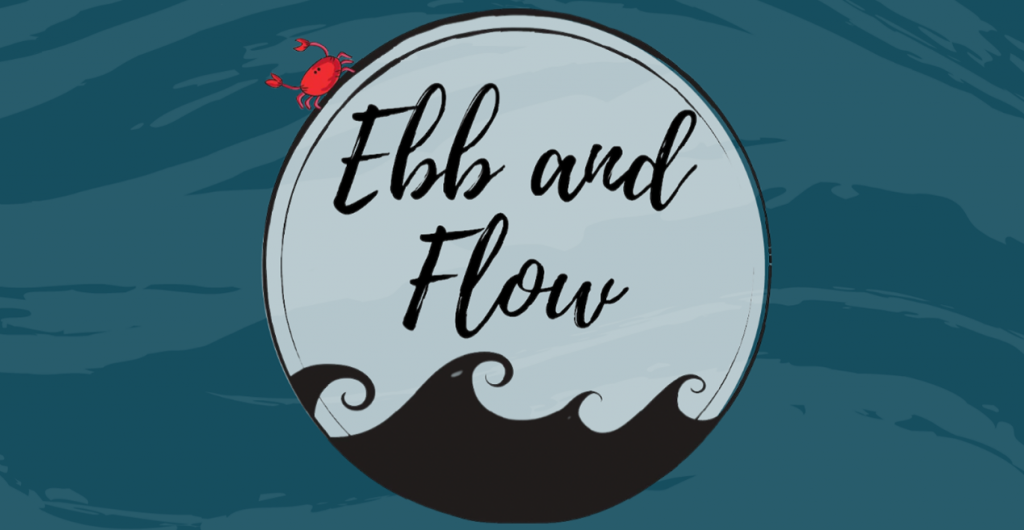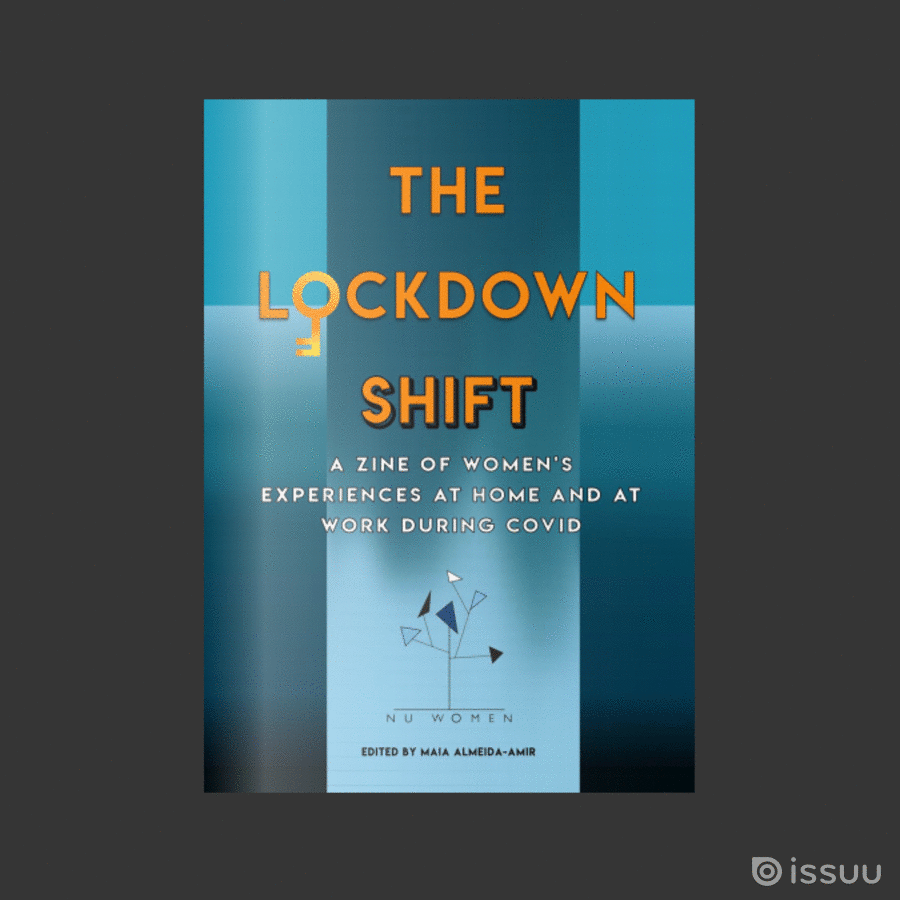By Lesley Wood (artist) and Elisa Lopez-Capel (lecturer at Newcastle University)
We are a group of six women sea swimmers who got together in 2020 and have given each other support, encouragement and plenty of laughs ever since. Like other women, we all juggle work and community volunteering with caring for our families through these difficult pandemic times.
Our friendship and the sea swimming have been crucial for our mental health and well-being. When the world shut down around us we were still there for each other down on the beach, in nature, clutching hot drinks, sharing stories, cake and a whole lot of kindness.

We have a lot of fun together but particularly enjoyed making a collective artwork in response to the call from the NU Women Zine The Lockdown Shift. Using a nifty method (waterproof, paper-lined tubes containing chalk pastels, stuffed inside our cossies) we recorded the patterns of our movement in the water, then added words to describe our shared experience of swimming in the sea. From which came the following ‘found poem’:
Brave, connected friendship.
Mother Sea kept me going.
Liberation in lockdown.
Our contribution to the NU Women zine sparked the idea of encouraging other creative people in Cullercoats to showcase their work. Thus Ebb & Flow was born, a community art celebration aiming at raising funds for our local RNLI station. A local venue was agreed, a call went out to local artists and other creative people, their submissions were reviewed, selected, and installed in the café space. After 3 months of hard work and enthusiastic support from pretty well everyone we talked to, two nights of community art were realised and an exhibition catalogue/zine was published (thanks to the Cullercoats Collective).

COVID restrictions were being lifted so, whilst still being careful, we welcomed around 80 people over the two nights. A Grand Opening showcased the work of 12 local artists, featured some excellent sea shanty singing, and an RNLI representative (sweltering in his full kit). On the following evening there was a wonderful performance night with local writers and musicians- the first time since lockdown for most people of either being part of, or performing to, an audience, laughing, singing and clapping together.
Ebb & Flow was a resounding success, coming at just the right time and blessed with glorious weather. As a bonus we raised £440 for our local heroes, the Cullercoats RNLI. It was a fabulous opportunity to share community, creativity, love and respect for nature and our beautiful coastline, celebrating the gifts it gave us through lockdown and telling the stories, the ups and downs of the extraordinary time we have been through together. In these uncertain times, Ebb & Flow was a pleasure to work on (a break from work!), we made something really good happen, which was heart-warming and fun. After such a long time of separation from each other, we experienced a powerful sense of connection and shared joy.

